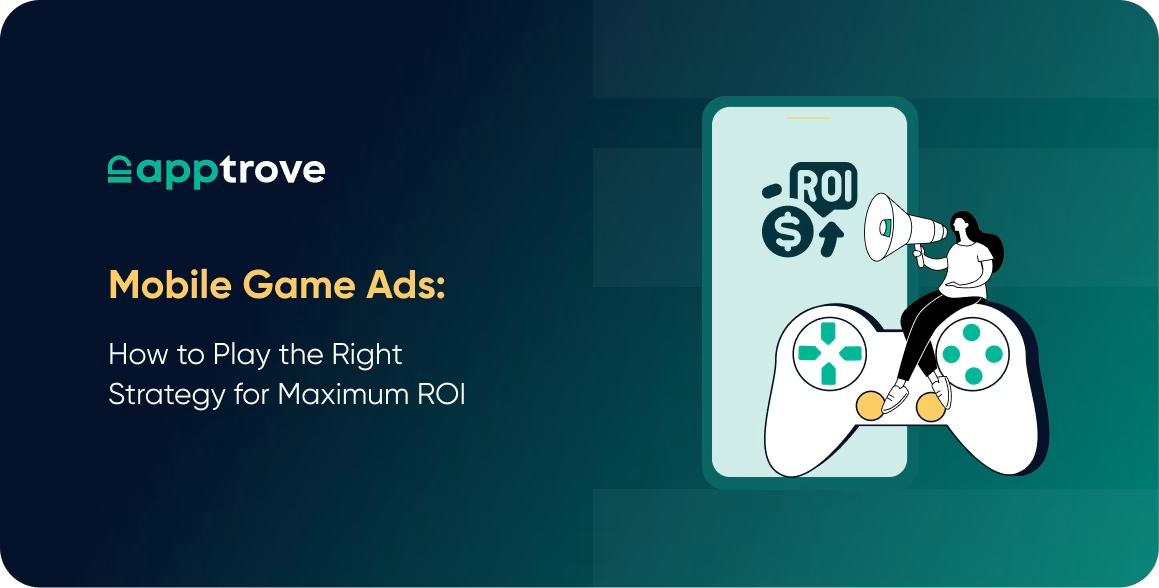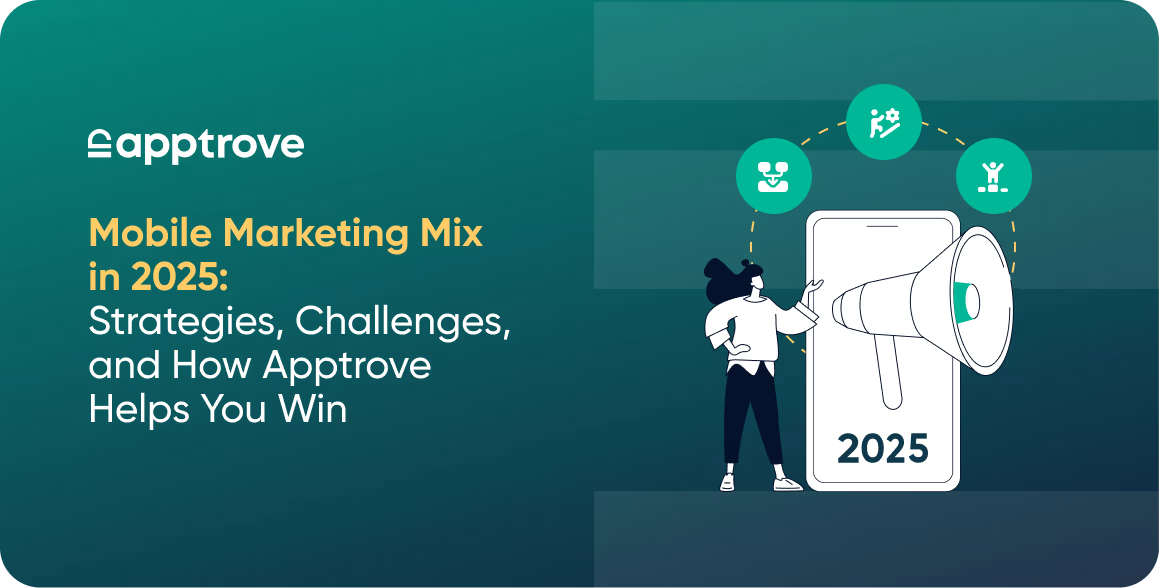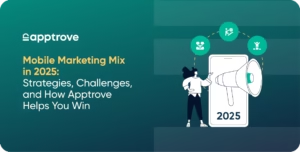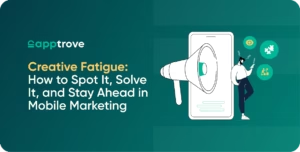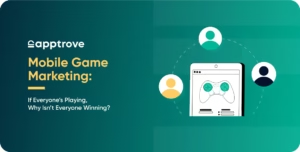If you have ever been curious about how mobile games generate revenue, the answer is simpler than you might think: ads. Mobile game ads are not just filler between levels or a fast distraction during downtime; they actually represent one of the most effective levers for marketers to reach engaged, high intent users. In fact, spending on mobile gaming advertising is expected to grow significantly, projected to reach $130.9 billion in global advertising spend by 2025 (up from $46.7 billion in 2021) and 93% of media buyers plan to incorporate in-game ads as part of their advertising campaigns.
Since there are billions of players and people spend hours inside games every single day, you can’t afford to ignore this channel. The real question is – are you playing the game of mobile ads right?
Apptrove will help you understand what mobile game ads are, how they work, what makes them different than traditional advertising, and how to build a winning ad strategy that drives installs and revenue and results in brand loyalty.
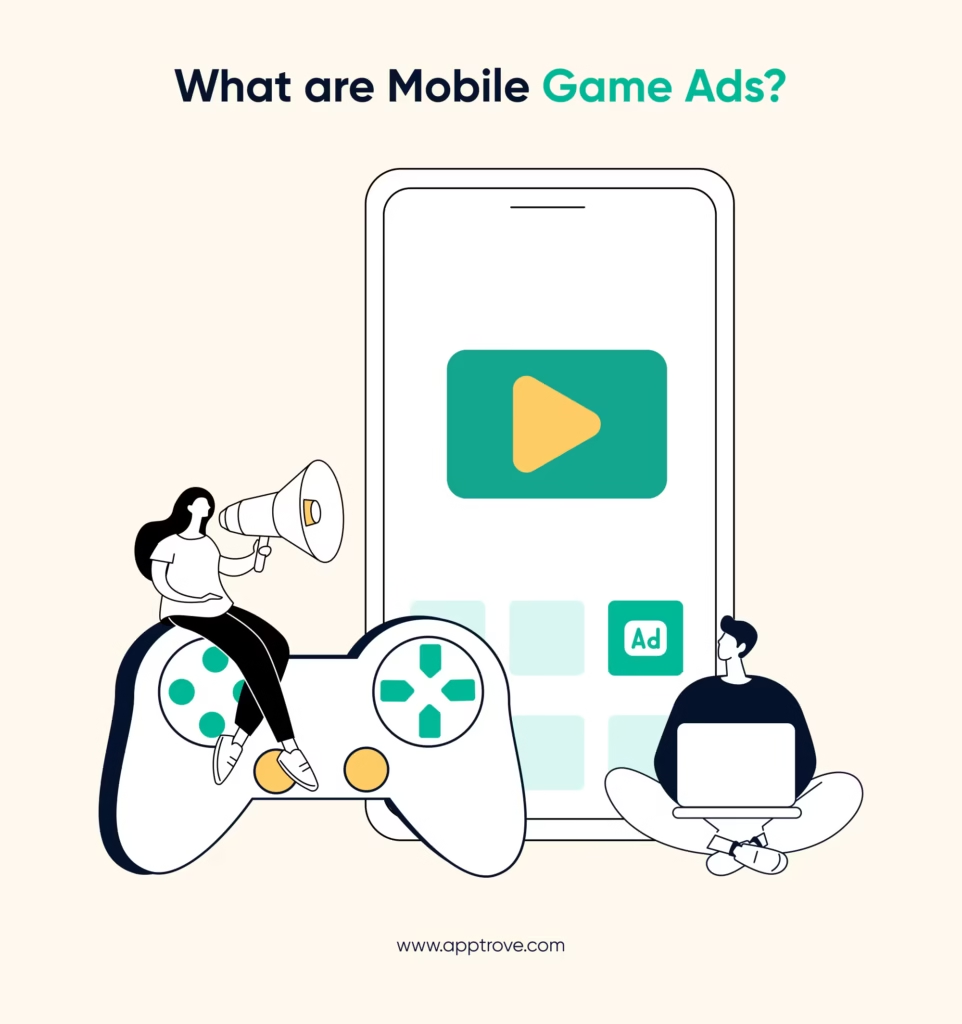
What Are Mobile Game Ads?
Mobile game ads are ads that are delivered while users are playing mobile games. They can come in a variety of ad formats including rewarded videos, interstitials, banners, playable ads, or branded placements that occupy space within the game experience.
Mobile game ads are different from typical digital ads because they exist in a highly interactive, immersive world, and users are already engaged. You are not interrupting someone’s casual web-browsing experience, you are entering a gaming platform that is perceived as a playground. This is why mobile game ads exhibit some of the highest engagement rates in the advertising ecosystem.
You’ve probably seen examples:
- A short video ad that rewards you with coins or an extra life.
- A playable ad that lets you test a new game before downloading.
- A branded in-game billboard or background item that makes the brand part of the environment.
These ad formats are subtle but effective because they match the context of the user’s behavior.
Benefits of Mobile Game Ads
Think about how many people play games on their phones. While a specific figure for app downloads being games is hard to pin down, the sheer number of downloads in the app market is enormous.
For you, the marketer:
- The reach is immense – Gaming is not a niche anymore – Everyone from teens to working people to retirees play mobile games.
- Engaged attention – Players will spend long sessions in games, which permits multiple views of your ads.
- A global audience – Mobile game ads provide access to audiences all over the world, cutting across demographics and cultures.
- Diverse formats – You are not tied to one type of ad. You can test ad vehicles, that fit your brand, and marketing goals.
The most useful dimension, is that mobile game ads are primarily an access point to an audience that is active, alert, and ready to engage. That is a rarity in the digital ad space.
Types of Mobile Game Ads You Can Use
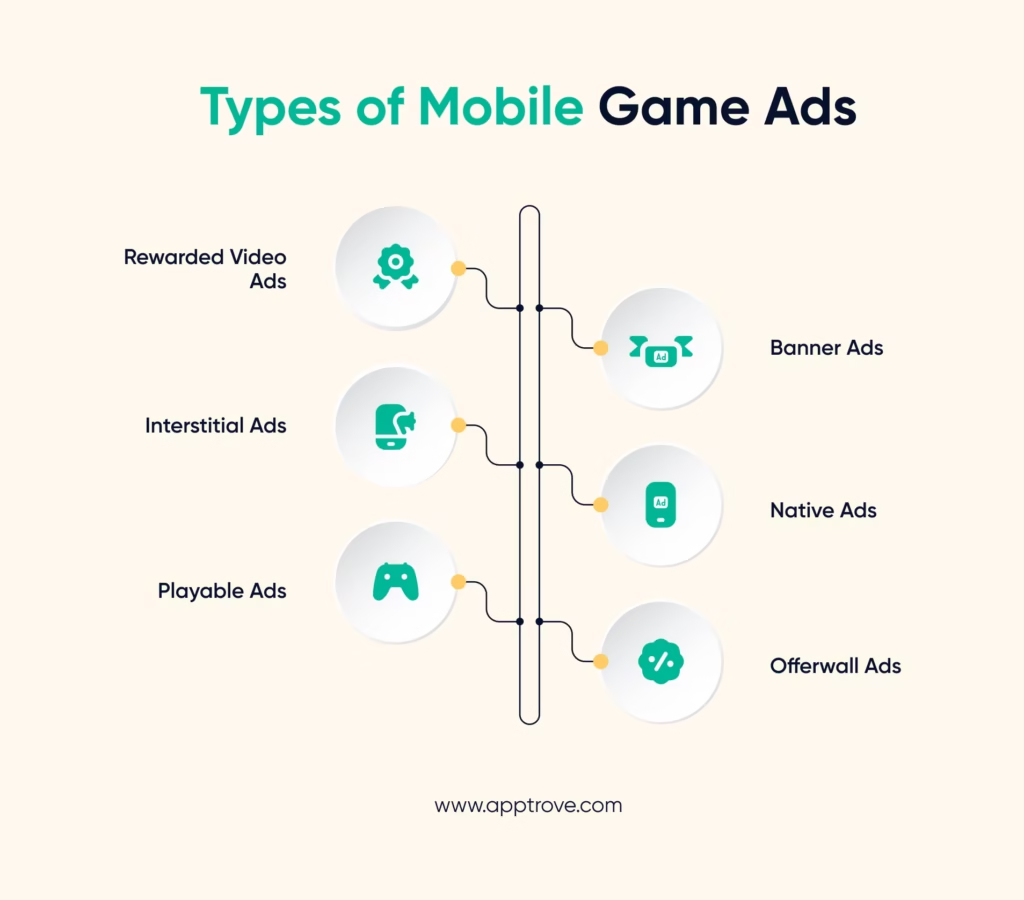
To win with mobile game advertising, you need to understand the different formats available and when to use them. Here’s a breakdown:
1. Rewarded Video Ads
Gamers view a brief video advertisement in return for in-game rewards, such as coins, extra lives, or new skins. This ad format is enjoyable, as it feels like a fair trade or exchange; the player receives value, and you receive their attention. Rewarded video ads are generally rated as high completion rates and favorable user sentiment.
2. Interstitial Ads
These are highly visible full-screen ads that run at natural pause points in the game – like after a level is completed or just before the next is started. They are effective in grabbing attention, but timing is critical so they dont frustrate the user.
3. Playable Ads
Playable ads are where mobile game ads really thrive. Playable ads allow users to engage in a mini-version of the game prior to downloading it. They are excellent for user acquisition campaigns because they give the user a sample of what is to come.
4. Banner Ads
Ad placements in the form of simple, static or animated ads at the top or bottom of your screen or web page. This format is less obtrusive and is less engaging than other formats. However, it is very affordable and works very well for brand recognition.
5. Native Ads
They mesh well with the game’s surroundings, like a racing game’s billboard or a branded item in a digital store. It is indistinguishable, truly immersive, and does not interfere with play.
6. Offerwall Ads
A player performs a task like downloading another application or completing a survey in exchange for in-game rewards. This format can generate a more significant amount of engagement, but must be targeted correctly.
Challenges You’ll Face in Mobile Game Ads
Of course, not everything is perfect. Mobile game advertisements have their own challenges:
- Ad fatigue – Players can become used to seeing ads so many times irritation can set in. As a result, you will need to diversify creatives.
- Intrusiveness – Poorly timed interstitial ads can frustrate users and create negativity toward your brand.
- Fraud risks – Mobile advertising is also not immune to fraud. Fake installs, click farms and bot traffic can siphon off your budget.
- Measurement gaps – Due to privacy regulations and walled gardens, signal loss may make it difficult to track ads outcomes.
This explains why it is critical to work with the right mobile measurement partner (for example, Apptrove). Adequate attribution, anti-fraud tools, and deep analytics are necessary to comprehend the which advertisements produce real results and the ones that simply waste the budget.
How to Build a Winning Mobile Game Ad Strategy
So how do you ensure that your ads not only get attention but also drive long-term ROI? Here’s your playbook:
1. Define Your Goals
Do you want app installs, in-app purchases, or brand awareness? Each objective has its own ad format. For example, playable ads work well for installs and native ads are good for brand awareness advertising.
2. Know Your Audience
Mobile gamers are not a monolith. Casual puzzle players behave very differently from hardcore RPG enthusiasts. Segment your audience based on preferences, playstyle, and demographics to tailor your ads.
3. Choose the Right Format
Pair the advertising format with your objectives and audience. Just because it is popular doesn’t mean it’s going to work for you; test out different formats, keep track of which ones perform well, and you may even learn about formats you hadn’t thought about in the past.
4. Focus on Creative Quality
The creative quality will ultimately make or break an ad for your mobile game. Keep your videos brief, visually appealing and interactive, if possible. For playable ads, be sure they are easy to use, and showcase some of your game’s best features.
5. Timing Is Everything
Interstitials are most effective between levels, not while the user is playing. Rewarded ads work best when the intent is to help users progress. Always respect the pacing of the game.
6. Measure and Optimize
This is where Apptrove helps you. Use deep attribution, real-time analytics, and anti-fraud services to optimize for real results. Monitor installs, retention, and lifetime value—not just clicks.
7. Don’t Overdo It
Balance is critical. Too many ads will push your players away. Collaborate with the developers to find an ad frequency that will optimize engagement without ruining the experience.
Final Word
In the field of digital marketing, mobile game advertisements are arguably not just another channel, but the most effective way to reach modern audiences. You are engaging users in their moments of attention, enjoyment, and interaction, precisely where you want to capture engagement and convert action.
In order to show real success, you must elevate your thinking of mobile game ads from a tactic to a full-blown strategy. When your partner is good, your formats and measurements are good, you will see measurable results, and your ad campaigns can go from dragging-to-drop-great.
Good, you want to be great at ad strategy. Apptrove can help you unlock the full power of mobile ads using attribution analytics, anti-fraud tools, and deep insights. Play smart and winning is yours. Contact us today!
FAQs
1. What are mobile game ads and how do they work?
Mobile game advertisements are available in multiple formats, such as rewarded videos, interstitials, banners, playable ads, and native ads, and occur within gaming apps. Mobile game ads promote engagement with players through interactive and immersive experiences, oftentimes providing offers or rewards that spur their attention, installs, and conversions.
2. Why should I include mobile game ads in my marketing strategy?
Mobile game ads have great scale, high engagement, and excellent targeting options. With billions of active players around the world, in-game advertising allows you to reach audiences while they are at their most engaged, enhance brand recall, and drive app installs or in-game revenue effectively.
3. What are the most effective mobile game ad formats?
The best performing ad formats are rewarded videos that are great for engagement, playable ads that drive high user acquisition quality, interstitial ads that drive visibility, and native or branded in-game placements that offer subtle brand promotion. Which ad format will work well for your campaign is dependent on campaign aims, user behavior and characteristics of the game.
4. What are the best metrics to measure the success of my mobile game ads?
To determine success, measure key performance indicators like click-through rates, installs, retention, in-app purchases, and lifetime value. Choosing to work with a mobile measurement partner allows for accurate attribution, fraud detection, and data to optimize campaigns for maximum return on investment.
5. What trends are influencing the future of mobile game advertising?
The future of mobile game advertising is moving towards hyper-personalization, immersive advertising formats such as AR and VR, cross-platform targeting, and deeper brand integrations in games. Keeping up with the latest trends will help marketers create unexpected ad campaigns that capture attention and create deep engagement.
